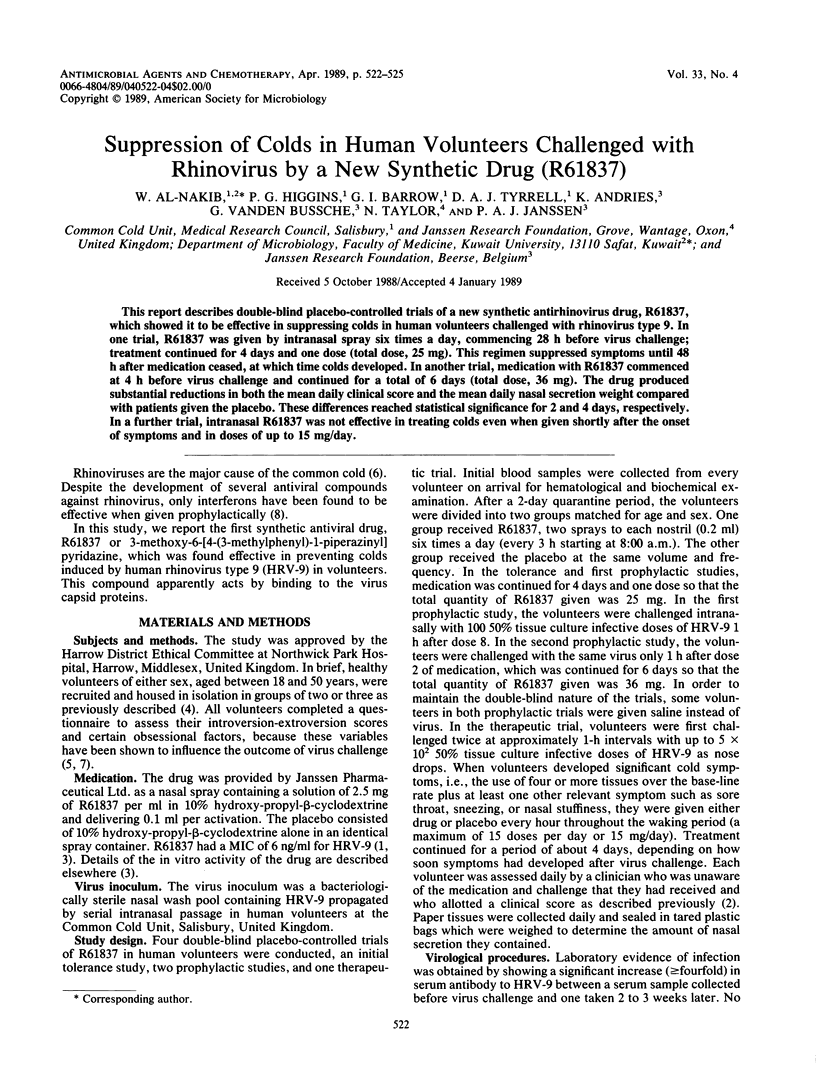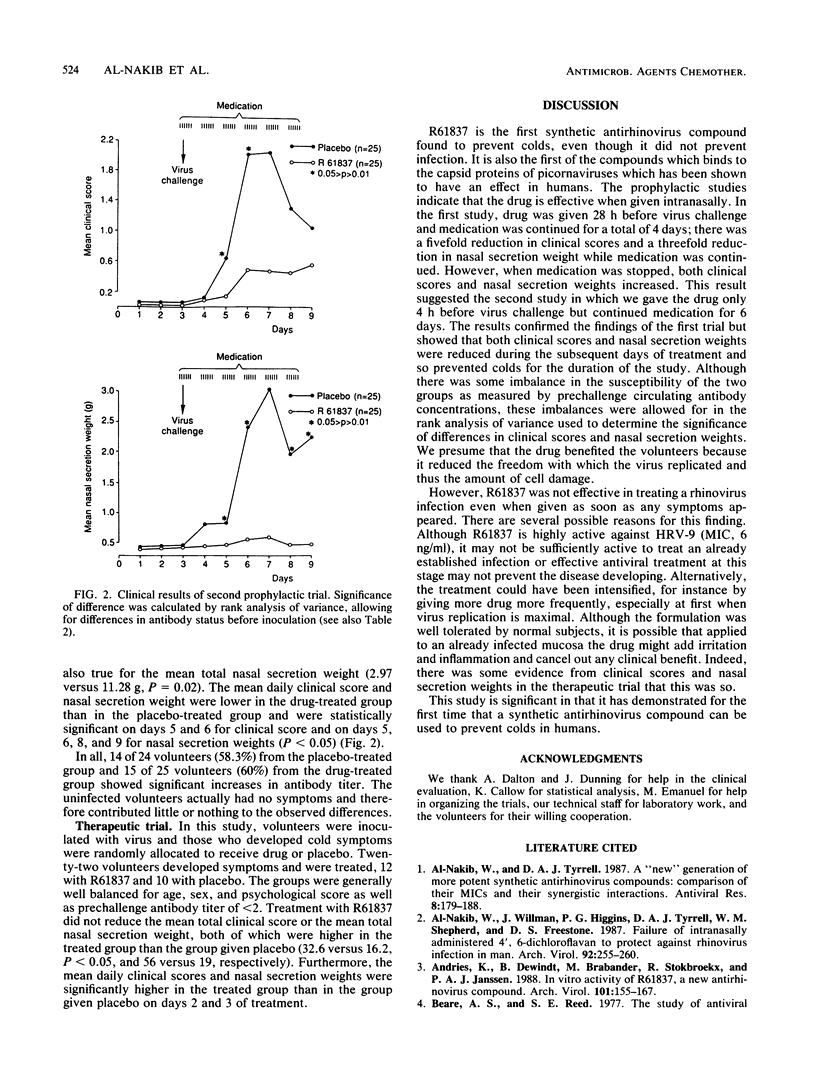Abstract
This report describes double-blind placebo-controlled trials of a new synthetic antirhinovirus drug, R61837, which showed it to be effective in suppressing colds in human volunteers challenged with rhinovirus type 9. In one trial, R61837 was given by intranasal spray six times a day, commencing 28 h before virus challenge; treatment continued for 4 days and one dose (total dose, 25 mg). This regimen suppressed symptoms until 48 h after medication ceased, at which time colds developed. In another trial, medication with R61837 commenced at 4 h before virus challenge and continued for a total of 6 days (total dose, 36 mg). The drug produced substantial reductions in both the mean daily clinical score and the mean daily nasal secretion weight compared with patients given the placebo. These differences reached statistical significance for 2 and 4 days, respectively. In a further trial, intranasal R61837 was not effective in treating colds even when given shortly after the onset of symptoms and in doses of up to 15 mg/day.
Full text
PDF



Selected References
These references are in PubMed. This may not be the complete list of references from this article.
- Al-Nakib W., Tyrrell D. A. A 'new' generation of more potent synthetic antirhinovirus compounds: comparison of their MICs and their synergistic interactions. Antiviral Res. 1987 Nov;8(4):179–187. doi: 10.1016/0166-3542(87)90072-6. [DOI] [PubMed] [Google Scholar]
- Al-Nakib W., Willman J., Higgins P. G., Tyrrell D. A., Shepherd W. M., Freestone D. S. Failure of intranasally administered 4', 6-dichloroflavan to protect against rhinovirus infection in man. Arch Virol. 1987;92(3-4):255–260. doi: 10.1007/BF01317482. [DOI] [PubMed] [Google Scholar]
- Andries K., Dewindt B., De Brabander M., Stokbroekx R., Janssen P. A. In vitro activity of R 61837, a new antirhinovirus compound. Arch Virol. 1988;101(3-4):155–167. doi: 10.1007/BF01310997. [DOI] [PMC free article] [PubMed] [Google Scholar]
- Broadbent D. E., Broadbent M. H., Phillpotts R. J., Wallace J. Some further studies on the prediction of experimental colds in volunteers by psychological factors. J Psychosom Res. 1984;28(6):511–523. doi: 10.1016/0022-3999(84)90085-0. [DOI] [PubMed] [Google Scholar]
- Couch R. B. The common cold: control? J Infect Dis. 1984 Aug;150(2):167–173. doi: 10.1093/infdis/150.2.167. [DOI] [PubMed] [Google Scholar]
- Totman R., Kiff J., Reed S. E., Craig J. W. Predicting experimental colds in volunteers from different measures of recent life stress. J Psychosom Res. 1980;24(3-4):155–163. doi: 10.1016/0022-3999(80)90037-9. [DOI] [PubMed] [Google Scholar]


